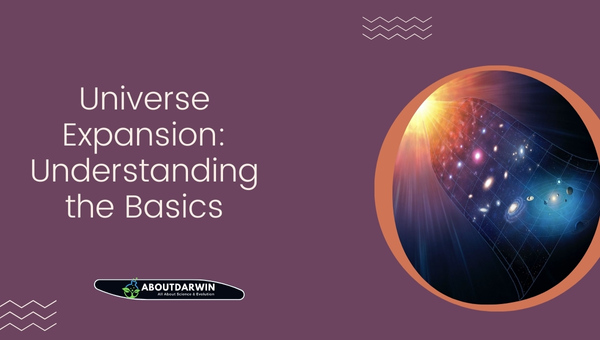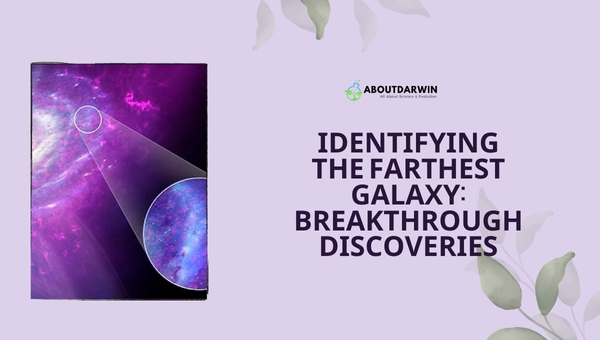Physical Address
304 North Cardinal St.
Dorchester Center, MA 02124
As we continue exploring the vastness of the cosmos, the concept of universe expansion piques my interest. It’s fascinating to learn about the farthest galaxies from Earth and what they reveal about the history and evolution of the universe.
In this article, I’ll delve into universe expansion, focusing on discovering the most distant galaxy while providing an insightful infographic to illustrate the data.
Advancements in technology have significantly improved our ability to detect objects in the far reaches of space. The Hubble Space Telescope, for example, has played a pivotal role in identifying the farthest known galaxy from Earth – GN-z11. This remote galaxy provides invaluable information about the early stages of the universe and helps to refine our understanding of its formation.
As we journey through the fascinating details of the universe’s expansion, we’ll get a unique glimpse of the incredible scale and mystery this infinite cosmic landscape offers. Buckle up, and let’s embark on this astronomical adventure together!
I find the concept of the Universe expansion intriguing and essential for understanding the cosmos’ formation and evolution. It’s at the heart of modern cosmology, and there’s much to learn. Let’s dive into some basics about this fascinating topic.

Cosmologists discovered that the Universe isn’t static – it’s continuously expanding. In 1929, famed astronomer Edwin Hubble observed galaxies moving away from us in every direction, suggesting they were part of a large-scale expansion. This was the birth of Hubble’s Law.
The Universe’s expansion is driven by dark energy, a mysterious force that counteracts gravity and causes galaxies to move away from each other. However, I must admit that scientists still don’t clearly understand dark energy, even though it makes up about 68% of the Universe’s total energy content.
Now let’s take a look at a basic overview of the Universe’s components:
| Component | Percentage of the Universe |
|---|---|
| Dark Energy | 68% |
| Dark Matter | 27% |
| Ordinary Matter | 5% |
Dark energy, dark matter, and ordinary matter make up the Universe, but it’s clear the majority belongs to dark energy.
One of the most critical discoveries associated with Universe expansion was detecting the Cosmic Microwave Background (CMB) radiation. In 1964, scientists Arno Penzias and Robert Wilson stumbled upon the remnants of the Universe in its infancy, giving us a glimpse of how the expansion began. The CMB is the snapshot of the aftermath of the Big Bang, which happened approximately 13.8 billion years ago.
Shifting our focus to the farthest galaxy from Earth, it’s critical to appreciate the sheer scale of distant galaxies. Experts believe the Universe is roughly 93 billion light-years in diameter, yet it continues to grow.
Galaxies located billions of light-years away exhibit a peculiar phenomenon known as redshift. The stretching of wavelengths, including light, occurs directly from the Universe’s expansion, making these faraway galaxies shift toward the red end of the spectrum.
To grasp the concept of Universe expansion and the farthest galaxy from Earth, some key points include:
In essence, Universe expansion shapes our comprehension of how the cosmos has evolved and gives us insights into mysterious phenomena like dark energy and distant galaxies.
Over the years, astronomers have made huge strides in identifying increasingly distant galaxies. Numerous breakthrough discoveries have marked the process of pinpointing the farthest galaxy from Earth.

Initially, the Hubble Space Telescope played a key role in unveiling the mysteries of the universe. Its immense power enabled us to discover galaxies existing billions of light-years away. Some of the most notable discoveries include:
| Galaxy | Distance (Billion Light-years) |
|---|---|
| GN-z11 | 13.4 |
| EGSY8p7 | 13.2 |
| MACS0647-JD | 13.3 |
These groundbreaking discoveries came one after another, pushing the limits of our understanding of the cosmos. We gained valuable insight into the early universe with each identification of a far-off galaxy.
However, the quest to find the farthest galaxy doesn’t stop there. The launch of NASA’s James Webb Space Telescope in 2021 aims to propel our knowledge of the universe further. This advanced telescope is anticipated to:
These technological advancements can potentially revolutionize our understanding of the universe and its expansion.
In the end, as we identify even more distant galaxies and uncover the secrets of the universe, we’ll enhance our knowledge of the cosmos and perhaps even the origins of our own existence. With advanced tools like the James Webb Space Telescope, I expect to observe further breakthroughs in the not-so-distant future.